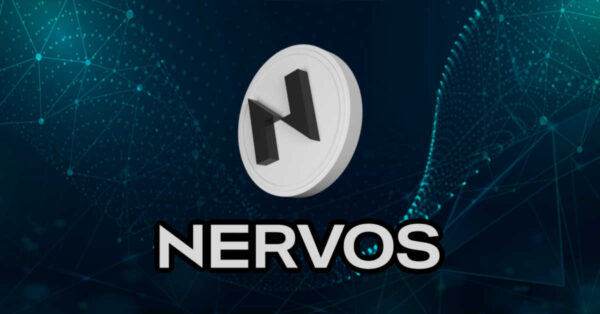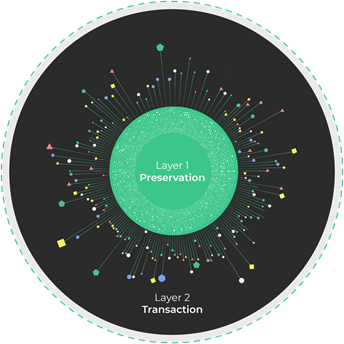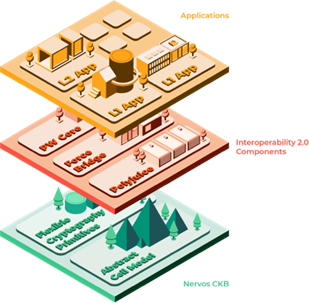


Nervos Network is a smart contract platform that is entering the blockchain 3.0 era with a multi-layered technology stack that is vastly different from what is currently used by other projects. Nervos is founded by a team of all-star blockchain veterans, and with the architectural design being led by Jan Xie, a former member of the Ethereum Core Team.
The “Blockchain Trilemma” was coined by Vitalik Buterin to describe the fundamental challenge with blockchains. When dealing with the traits of decentralization, security, and scalability, there is no perfect solution. An increase in one must come at a cost of the other two. Many blockchain projects in existence today are rehashing existing approaches with slight differences to the distribution of these traits.
Nervos believes that there is no “silver bullet” to the Blockchain Trilemma. This is a challenge that will persist indefinitely. However, there is a workaround. The different layers in Nervos can each take different approaches to the trilemma, and they can work together to achieve higher levels of all three traits than can be achieved on a single layer.
The first layer is for preservation and focuses on decentralization and security. The second layer is for transactions and focuses on scalability. These layers work together transparently to provide higher levels of all three than would be possible on a single layer.

Decentralized blockchains rely on economic incentives in order to operate their networks and keep participants honest. History has shown that this is not a simple matter, and this is why many of the most popular blockchains are now battling new challenges which threaten the long-term operation of the platform.
● What happens when block rewards run out?
● What happens if the size of the blockchain state gets too large?
● What happens if the incentive to attack the assets on the platform outweighs the incentive to secure them?
Nervos’ tokenomics were designed to approach these questions without compromise. The solution requires an approach that could not be accomplished using existing blockchain designs and necessitates a complete reimagining of how a blockchain should function internally.
The result is a fully implemented model that includes:
● Perpetual block rewards while retaining a deflationary currency.
● Incentivized state size reduction with fully implemented state rent.
● A value capture mechanism that increases the value of the CKByte native token with every new token or asset that is created on the Nervos platform, continuously scaling network security and increasing value for stakeholders.
Rooted deep in Nervos’ programming model is belief that greater flexibility leads to faster innovation and the ability to adapt to change. To accomplish this, the Nervos platform was built on the RISC V instruction set. This means that Nervos’ virtual machine operates at the lowest level possible, executing smart contracts on virtualized hardware.
This gives smart contracts flexibility that isn’t possible on anywhere else. For example, every other blockchain platform relies on hardcoded cryptographic functions and proprietary account address formats. These are inflexible and require a hardfork to update or change. Nervos has no such limitations. All cryptographic functions are implemented by developers as normal libraries, and this allows accounts to inherit address formats from any other blockchain.
This kind of flexibility gives Nervos a distinct advantage for interoperability. Nervos can transparently adapt to the requirements of other blockchains, both on the backend and the frontend, delivering a seamless experience for users of all major blockchains. This means that a developer can build a single dapp on Nervos, then immediately gain access to users of multiple different blockchains. This significantly reduces the cost of development since different versions of the dapp no longer need to be developed to service to each audience.

The Nervos mainnet launched in 2019. However, this was just the first layer in what will eventually become a multiple layer ecosystem. Nervos has been quietly building ever since.
The first layer 2 is an Ethereum EVM compatibility layer. This will allow smart contracts developed in Ethereum’s Solidity language to be used on Nervos. Side-by-side with this effort, an asset bridge to Ethereum is nearing completion. The result of these efforts will allow Ethereum users to use dapps build on Nervos, but with two big noticeable differences: faster execution and lower transaction fees. Both the EVM Layer 2 and asset bridge are currently in testnet, with mainnet launch dates expected in the next few months.
Once completed, Nervos will have officially launched their “Interoperability 2.0” initiative, empowering developers to reach audiences on both Nervos and Ethereum with a single code base. Also nearing completion is the Cardano bridge, which will further extend developer reach to another growing ecosystem. More bridges will continue to be built for the foreseeable future, to eventually support all major blockchain platforms.
For more information, visit the official website at Nervos.org.

Senior Software Engineer at Nervos Network. Founder of RigidBit. Cryptocurrency since 2011.
View all postsShare This Article
Join 10,000+ forward thinkers! Get crypto education in your inbox.